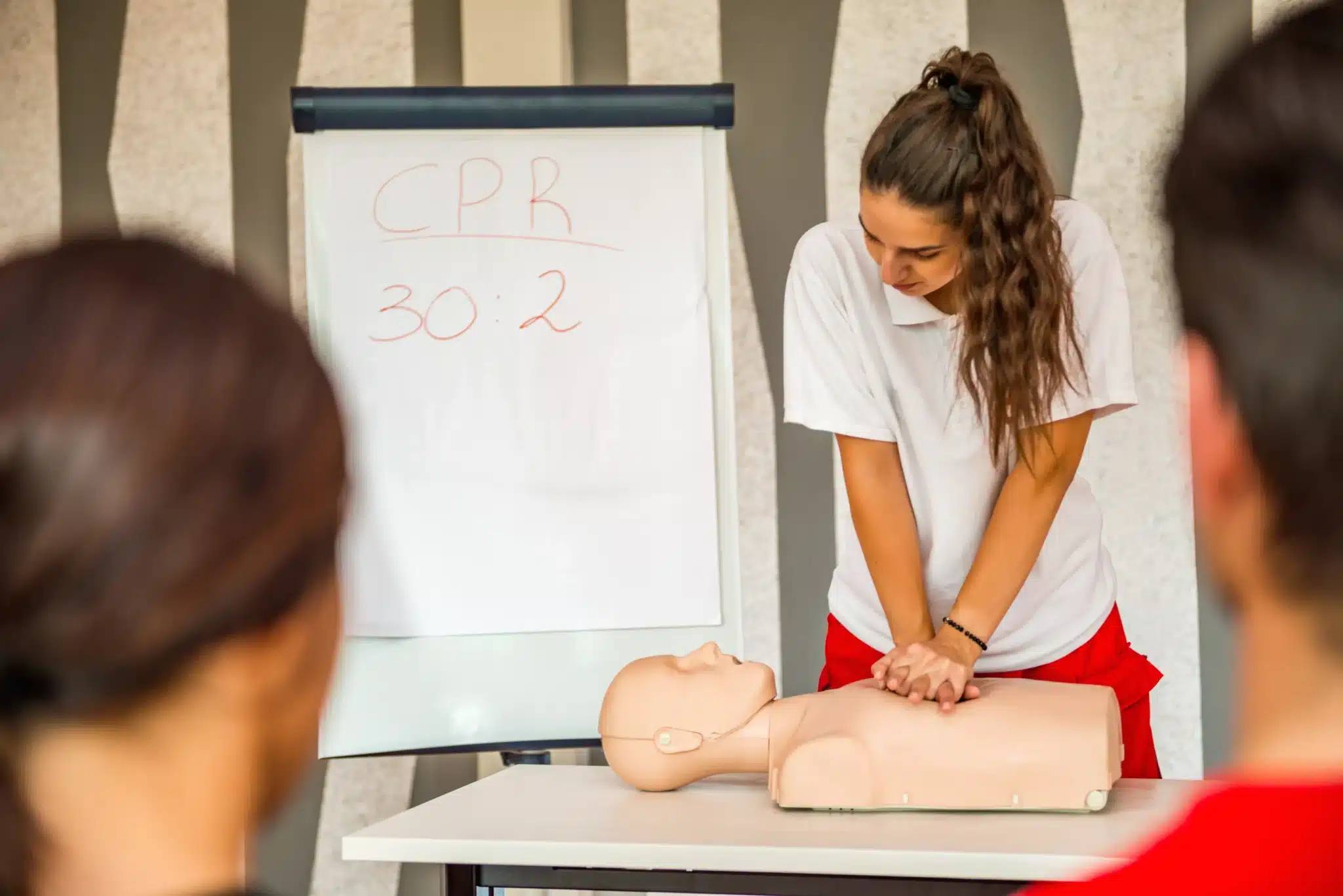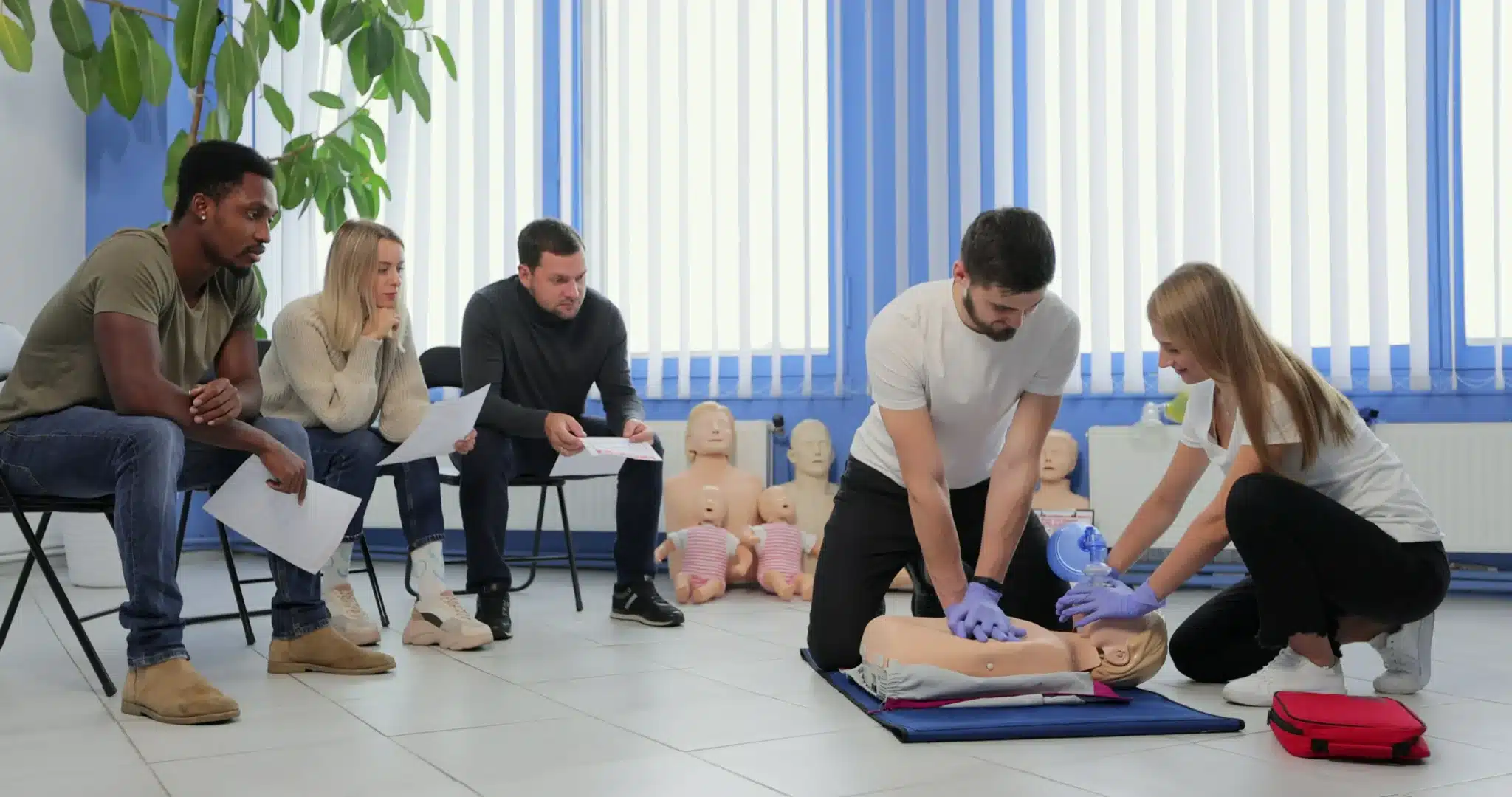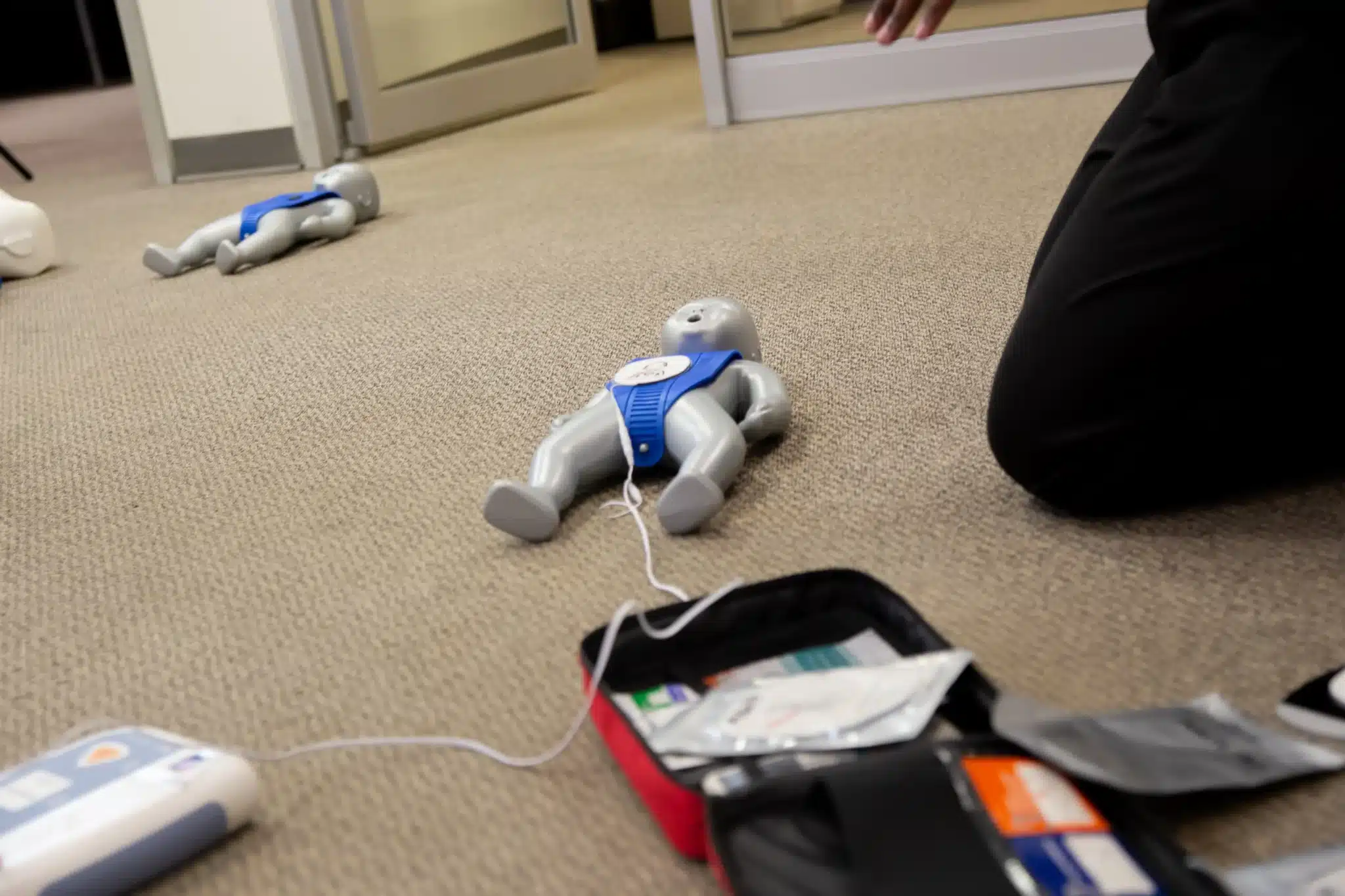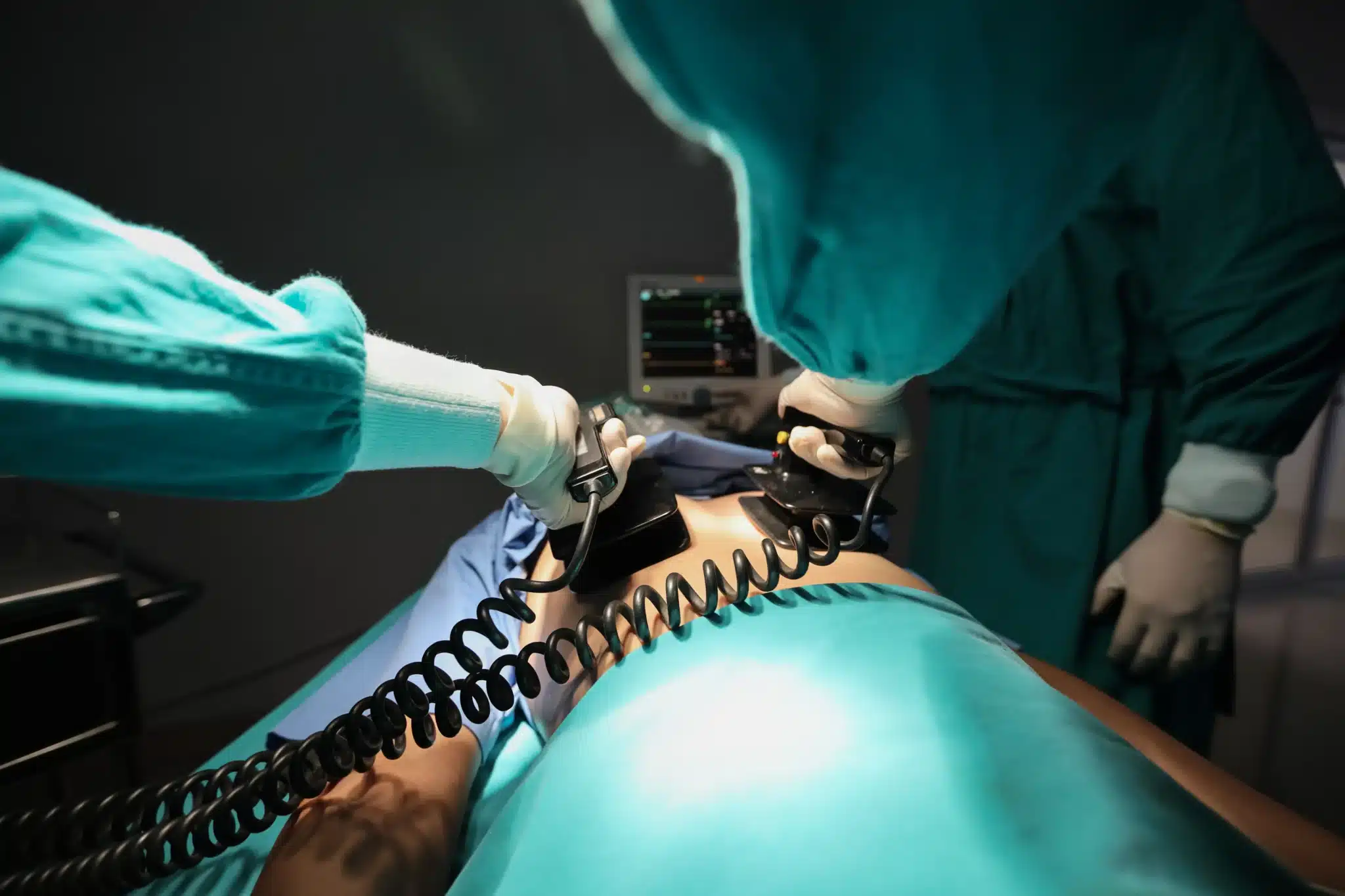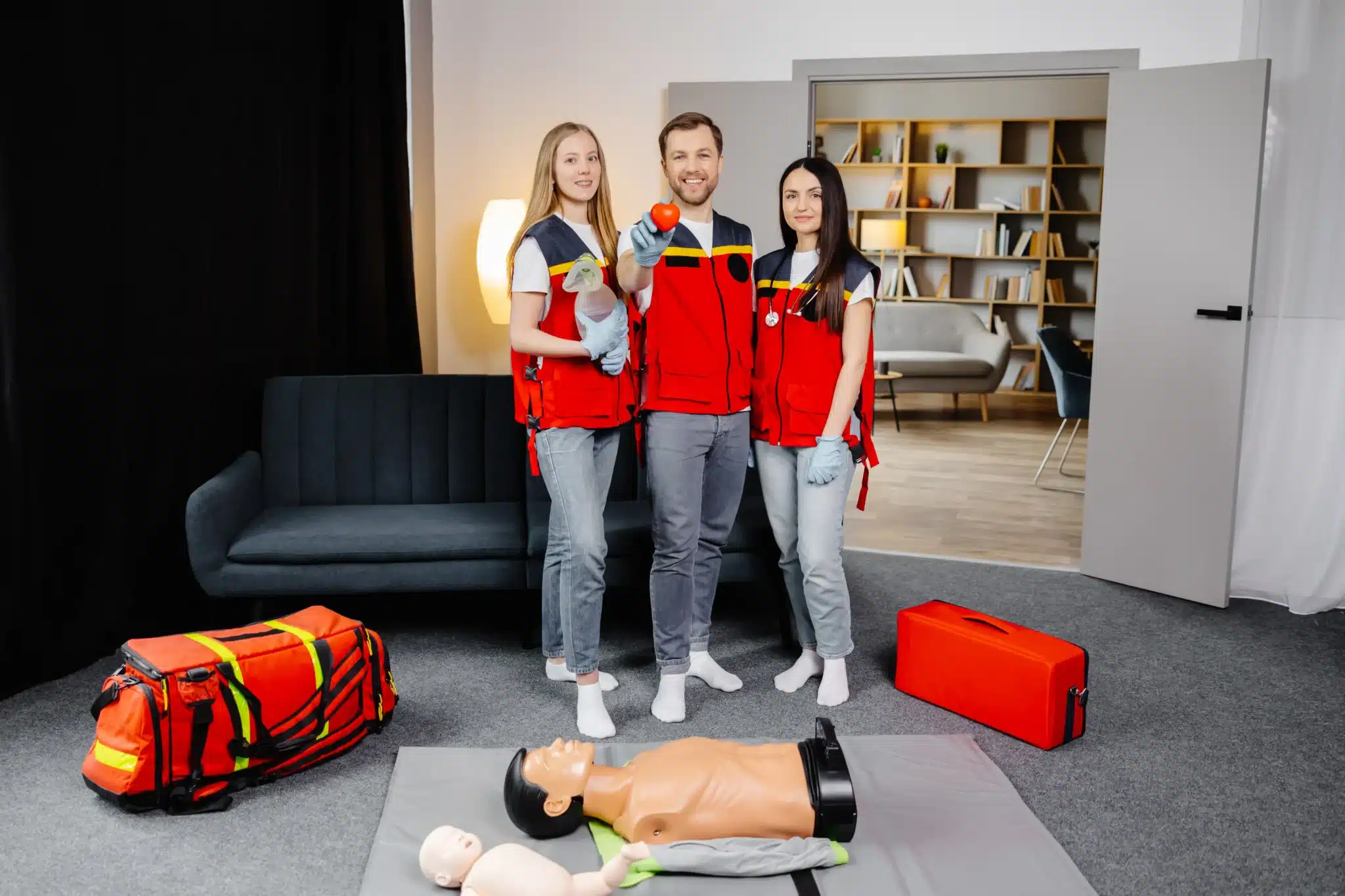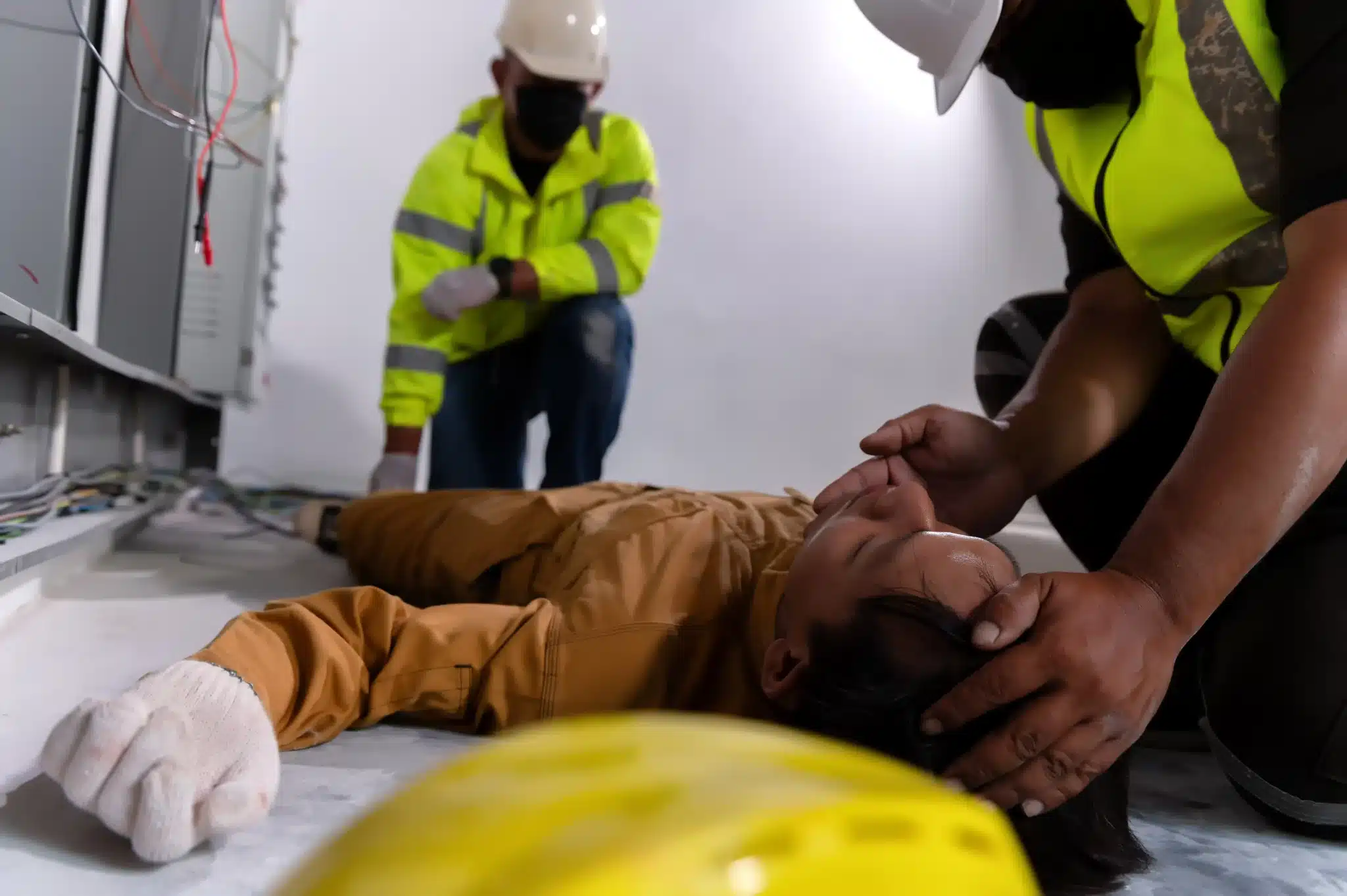Working in healthcare means constantly evolving your skills and knowledge. One of the most fundamental skills you’ll use throughout your career is Basic Life Support (BLS). BLS recertification ensures these life-saving skills remain sharp, enabling you to respond effectively in critical situations. Whether you’re searching for “BLS recertification near me” or exploring online options, this guide will help you find the right course, understand the process, and prepare for your recertification with confidence. We’ll cover everything from the basics of BLS to choosing the right course format and staying prepared between renewals.
Key Takeaways
- Regular BLS recertification keeps your life-saving skills sharp. It ensures you’re prepared for emergencies, whether you’re a healthcare professional or want to be ready to help. Explore convenient online or in-person options to fit your schedule.
- Choose an accredited BLS recertification provider to meet professional standards. Look for reputable organizations like the AHA and confirm your employer accepts the certification before you enroll.
- Prepare for your recertification and practice regularly. Review key concepts, take practice tests, and actively participate in your course. Stay sharp between renewals by reviewing guidelines and simulating emergency scenarios.
What is BLS Recertification & Why is it Important?
BLS recertification is how healthcare providers and other professionals stay up-to-date on their Basic Life Support skills. It’s a refresher course that ensures you’re prepared to respond effectively in emergencies. This process involves reviewing core concepts and demonstrating competency in essential life-saving techniques. Why is it so important? Because lives depend on it. Regular recertification ensures you can confidently provide aid when every second counts.
What is BLS & Why Does it Matter?
Basic Life Support (BLS) equips you with the skills to respond to cardiac arrest and other life-threatening emergencies. It covers essential techniques like CPR, using an AED, and relieving choking. These skills are critical for anyone working in healthcare, but they’re also valuable for teachers, coaches, parents, and anyone who wants to be prepared to help in a crisis. BLS training emphasizes early intervention and high-quality CPR, both of which significantly improve a person’s chances of survival. The American Health Training association points out that BLS certification is a crucial credential for healthcare professionals, and there are common myths surrounding it. It’s not just about checking a box; it’s about having the confidence and competence to make a real difference. Medtigo explains that BLS training includes AEDs, basic airway management, and techniques for assisting someone who is choking.
How Often Do I Need to Recertify?
BLS certifications are typically valid for two years, as highlighted by the National CPR Foundation. This timeframe ensures your skills and knowledge remain sharp. You can usually renew up to 30 days after the expiration date, according to Save A Life CPR. Staying current with your BLS certification demonstrates your commitment to providing high-quality care and maintaining your readiness to respond to emergencies. Check with your employer or certifying organization for specific renewal requirements. At Fremont CPR Classes, we offer convenient and affordable BLS recertification courses to help you stay prepared. Contact us today to learn more.
Find BLS Recertification Near You
Ready to renew your BLS certification? This section will help you find the right recertification course, whether you prefer hands-on learning or the flexibility of online training. We’ll cover several options, from local providers to online platforms.
Local Options
Fremont CPR Classes
If you’re near Fremont, Newark, or San Jose, Fremont CPR Classes offers a range of American Heart Association (AHA) courses, including BLS renewal. Their in-person classes are designed for healthcare providers, covering essential skills like CPR, AED use, and choking relief. Check out their discount group rates for added value.
American Red Cross
The American Red Cross also provides BLS certification and renewal, catering to healthcare professionals and first responders. Visit their website to find classes in your area.
Local Hospitals & Medical Centers
Many hospitals and medical centers offer BLS recertification courses to their staff and the public. These courses typically follow the latest guidelines and offer hands-on practice. Reach out to your local hospital or medical center for more information.
Community Colleges
Community colleges are another great resource for affordable BLS certification and recertification. They often offer flexible schedules, making these courses accessible to more people. Visit your local community college website for details.
Online Providers
If you prefer online learning or have a packed schedule, plenty of institutions offer online BLS renewal courses. These courses usually cover the same material as in-person training, including CPR, choking relief, and AED use.
Choosing a Provider: What to Consider
When choosing your BLS recertification provider, consider a few essential things. Accreditation is key—it ensures the course meets established standards. Decide if you prefer in-person or online learning, and consider the overall cost. Also, research the training center’s reputation to ensure you’re getting quality instruction. For those in Northern California, this CPR directory can help. And if you have any questions, feel free to reach out.
Online vs. In-Person BLS Recertification
Deciding how to recertify your BLS skills? Both online and in-person courses offer unique advantages. Understanding these will help you choose the best fit for your learning style and schedule.
Benefits of Online Courses
Online BLS renewal courses offer flexibility for busy professionals. You can complete the coursework at your own pace, fitting it around your existing commitments. These courses typically include training on CPR, AED use, and choking relief, much like in-person classes. This makes online recertification a convenient option for those constantly on the go. If you’re looking for a quick and easy way to renew your BLS certification, explore some of the benefits of online BLS training.
Advantages of In-Person Training
In-person BLS courses provide hands-on practice and direct interaction with an instructor. This allows for personalized feedback and immediate clarification on any questions you may have. These courses, designed for healthcare providers, cover core life-saving skills, including CPR, using an AED, and relieving choking. For a deep dive into in-person BLS renewal, take a look at our BLS Renewal in Fremont guide. The guide covers everything from course content to local providers.
Hybrid Learning: Convenience + Hands-on Practice
Looking for the best of both worlds? Hybrid learning combines the convenience of online coursework with the benefits of in-person skills practice. You can complete the theoretical portion online at your own speed, then attend a brief in-person session to demonstrate your skills and receive feedback from an instructor. This option is ideal for those who prefer a more flexible learning experience but still value the hands-on aspect of traditional training. SureFire CPR offers helpful tips on preparing for your BLS certification, regardless of the format you choose. Learn more about our BLS CPR courses in Fremont, which include various learning options to suit your needs.
BLS Recertification: Costs & Value
Getting recertified in Basic Life Support (BLS) is an investment in your skills and career. Let’s break down the typical costs and discuss why it’s worthwhile.
Average Costs
BLS recertification costs vary depending on the provider and course format. You can find online recertification options for around $15, like those from the National CPR Foundation. In-person training tends to be a bit more, often between $50 and $80. Remember to factor in any extras, such as study materials or travel, when budgeting.
Factors Affecting Cost
Several factors can influence the final price. The course format (online versus in-person) plays a significant role, as does the training center you choose. Location can also have an impact, with courses in larger cities sometimes costing more. While cost is a valid consideration, remember the value of this important skill. As American Health Training points out, focusing only on the upfront cost overlooks the long-term benefits.
Discounts & Group Rates
Many training centers offer discounts for groups, making it a smart choice for workplaces or friends. Fremont CPR Classes provides these discounts, so check with your colleagues or classmates. See if your chosen provider offers similar deals.
Long-Term Benefits of Certification
The value of BLS recertification goes beyond the initial cost. For healthcare professionals, a current BLS certification is essential for career growth and excellent patient care. It shows you’re dedicated to professional development and keeps your skills sharp. Even outside of healthcare, having a valid BLS certification offers peace of mind and empowers you in emergencies. ACLS.com highlights how BLS certification demonstrates career development and keeps skills current.
Is Your BLS Recertification Accredited & Recognized?
Making sure your BLS recertification is legitimate and accepted is key, especially if you’re a healthcare provider. This section clarifies what to look for and how to confirm your recertification will meet workplace standards.
Key Accrediting Organizations
Several respected organizations accredit BLS recertification courses. The American Heart Association (AHA) is a primary authority, setting the standard for BLS training. When choosing a course, look for AHA affiliation to ensure it meets industry best practices. Other reputable accrediting bodies include the American Medical Association (AMA) and the American Nurses Credentialing Center (ANCC). For example, ACLS.com offers online BLS certification accredited by the ADA, AMA, and ANCC. Knowing the accrediting body helps you gauge the course’s quality and acceptance.
Verify Course Accreditation
Before signing up for any BLS recertification course, double-check with your employer. A quick chat with your HR department or manager will confirm they accept online BLS certifications from the provider you’re considering. This simple step prevents any surprises and ensures your new certification will be recognized. It’s always better to be safe than sorry, especially when it comes to maintaining your professional credentials.
Employer Recognition: What to Know
BLS certification is a cornerstone for healthcare professionals. It demonstrates a commitment to patient safety and high-quality care. Understanding the importance of BLS is crucial, and clearing up any misconceptions about BLS for healthcare providers can improve patient care. Solid BLS skills are essential for any healthcare worker, and staying current with your certification shows you take this responsibility seriously. Debunking common myths about BLS certification encourages more people to pursue this life-saving training and recognize its value (American Health Training). By prioritizing a recognized and accredited BLS recertification, you invest in both your career and the well-being of those in your care.
BLS Recertification: Enrollment to Certification
Getting recertified in Basic Life Support (BLS) is straightforward. This section walks you through the steps, from enrollment to earning your updated certification.
How to Enroll
Finding the right BLS recertification course and enrolling is easy. Start by searching online for “BLS Recertification near me” to find local providers like Fremont CPR Classes. Many organizations offer online registration through their websites, allowing you to quickly secure a spot in a class that fits your schedule. For example, you can explore BLS renewal courses and register directly through the Fremont CPR Classes website.
Course Length & Time Commitment
BLS recertification courses refresh your essential lifesaving skills efficiently. Most courses range from four to six hours, covering key concepts, demonstrations, and practice scenarios. The exact time commitment depends on the course provider and format (in-person or online blended learning). Check the course details when registering so you can set aside enough time to fully engage with the material and practice. Fremont CPR Classes offers various course schedules to accommodate busy professionals.
Exams & Certification Requirements
After completing the BLS recertification course, you’ll need to pass an exam to demonstrate your competency. This typically involves a written assessment and a practical skills test, where you’ll perform CPR and other BLS techniques on a manikin. Once you pass both components, you’ll receive your updated BLS CPR certification card, often provided by the American Heart Association (AHA). This card is valid for two years, ensuring you’re equipped to provide effective basic life support when needed. You can learn more about AHA BLS certification through resources like Medicus Training. Maintaining a current certification is crucial for healthcare providers and anyone else required to demonstrate BLS proficiency.
Prepare for Your BLS Recertification
Getting ready for your BLS recertification doesn’t have to be stressful. With the right approach, you can refresh your skills and breeze through the process. This section covers common misconceptions, effective prep strategies, and tips for maintaining your skills.
Common Recertification Misconceptions
One common misconception is that BLS certification is only for doctors and nurses. In reality, many professions benefit from BLS training, including teachers, coaches, and childcare providers. Another myth is that if you have CPR training, you don’t need BLS certification. While CPR is a component of BLS, BLS covers a broader range of life-saving skills, including using an AED and relieving choking. Don’t let these common myths about BLS certification prevent you from getting certified. Understanding the principles of BLS is crucial for effective patient care and contributes to overall patient safety.
Effective Prep Strategies
Before your BLS recertification course, familiarize yourself with the basics. Review the BLS Provider Handbook and take a few practice tests. Brushing up on key topics and practicing essential techniques will boost your confidence and ensure a smooth renewal. Preparing in advance can make all the difference.
Make the Most of Your Training
Your recertification course will cover essential procedures, including CPR, AED use, and managing choking. Actively participate and ask questions. Remember, the AHA BLS CPR card is valid for two years, so make the most of your training to stay up-to-date. This refresher course provides valuable hands-on practice and reinforces critical skills. Take advantage of the opportunity to practice with different scenarios and ask your instructor for personalized feedback.
Maintain Your Skills Between Renewals
Between renewals, stay sharp by periodically reviewing BLS guidelines. Simulate emergency scenarios to build muscle memory and test your practical skills under pressure. Being aware of common mistakes in basic life support can also help you avoid them in real-life situations. Regularly reviewing BLS information and practicing techniques will keep your skills fresh. Consider joining a local CPR study group or practicing with colleagues to reinforce your knowledge and maintain your confidence.
Related Articles
- BLS Renewal in Newark: Your Complete Guide – Fremont CPR Classes
- BLS Renewal San Jose: Your Complete Guide – Fremont CPR Classes
- Your Guide to ACLS Certification in San Jose – Fremont CPR Classes
- BLS Certification in San Jose: The Complete Guide – Fremont CPR Classes
- BLS HeartCode San Jose: Your Certification Guide – Fremont CPR Classes
Frequently Asked Questions
How long is a BLS recertification course? BLS recertification courses are typically concise, ranging from four to six hours. The exact duration will depend on the specific course provider and whether you choose an online or in-person format.
What does BLS recertification cover? BLS recertification covers core life-saving techniques, including CPR, AED use, and relieving choking. It serves as a refresher course to ensure your skills and knowledge are current. The course content aligns with the latest guidelines from organizations like the American Heart Association (AHA).
Where can I find BLS recertification near me? You can easily find local BLS recertification courses by searching online for “BLS recertification near me.” Local providers like Fremont CPR Classes, the American Red Cross, hospitals, medical centers, and community colleges often offer these courses. Online directories can also help you locate certified training centers in your area.
What’s the difference between online and in-person BLS recertification? Online BLS recertification offers flexibility, allowing you to complete the coursework at your own pace. In-person classes provide hands-on practice and direct interaction with an instructor. Both formats cover the same core material, but the learning experience differs. Some providers offer hybrid courses that combine online learning with in-person skills sessions.
How much does BLS recertification cost? The cost of BLS recertification varies depending on the provider, course format, and location. Online recertification can be more budget-friendly, while in-person training tends to be slightly more expensive. Many providers offer group discounts, so check for those options if you’re recertifying with colleagues. Remember to weigh the cost against the long-term value of maintaining this essential skill.
